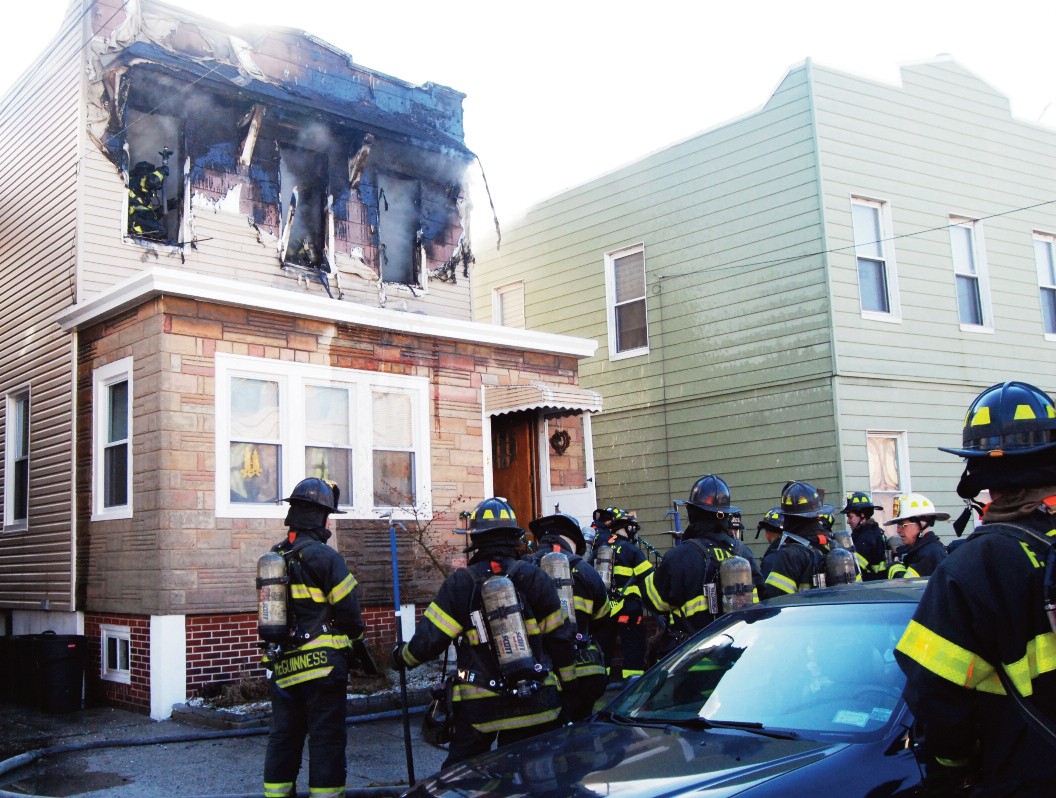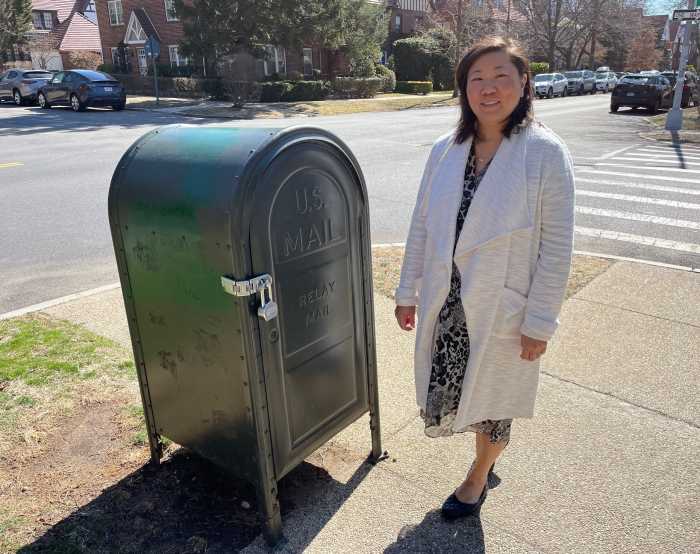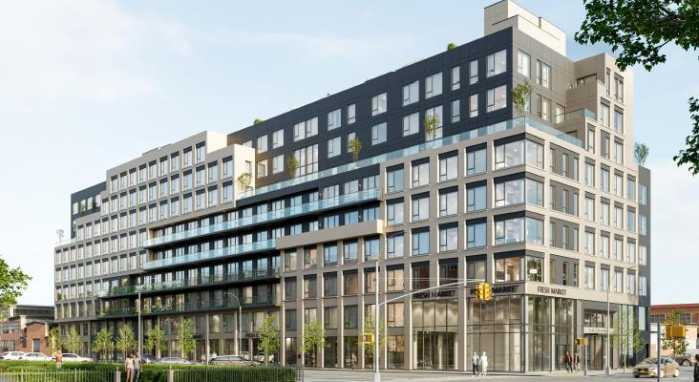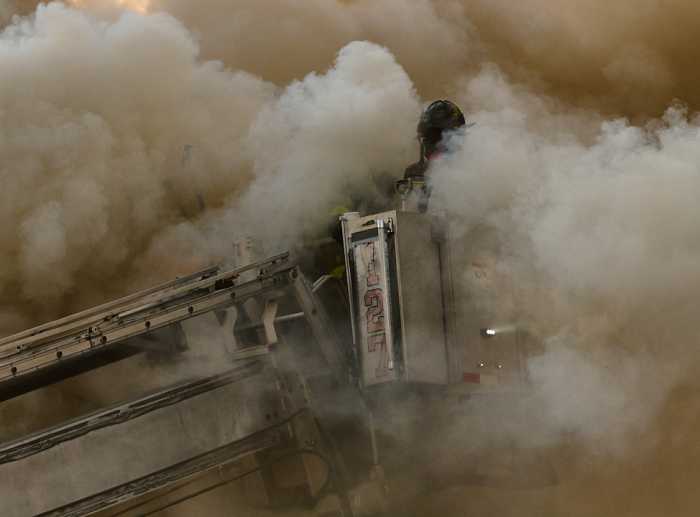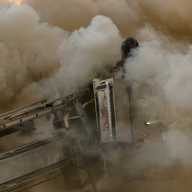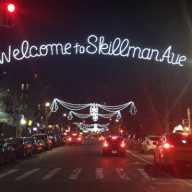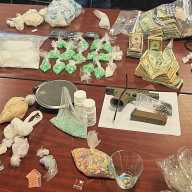Still Struggling After Storm, Residents Do Their Best To Cope
More than a week after the monster hybrid storm known as Hurricane Sandy unleashed her fury on New York City and most of the northeastern U.S., residents across the five boroughs not only continue to cope with many challenges in their return to normalcy, but are also working together to help those whose lives were shattered by Mother Nature.

Many areas of New York City remained in the dark a week after Sandy’s winds and surf knocked down power lines and crippled transformers, but crews from Con Edison continue to work to end the blackout. They were aided by the National Guard and energy workers from across the U.S. who have answered calls for assistance in the northeast region.
In the days after the storm, the transit system was slowly being brought back to life—and overwhelmed by commuters seeking to travel to and from work. Roads were so jammed with drivers heading to and from Manhattan that the city issued carpooling restrictions for traffic crossing the East River. However, by the weekend, things became a bit easier for subway riders as rail tunnels between Brooklyn and Manhattan reopened, and service across the East River was restored. (See the story on Page 6 for details.)

Gasoline shortages also made for impatient drivers, as many stations either had long lines for limited supplies, or were forced to close for extended periods after running out of fuel. The frustration grew to the point where there were isolated reports of irate drivers attacking each other. Relief finally began to trickle in this week at the pumps, as refineries in New Jersey went back into production, and more gasoline was imported into the city during the weekend.
The state of the city schools was also in flux; classes were back in session Monday but several dozen schools were not able to reopen due to flooding or power issues. All schools then closed for Election Day Tuesday, and reopened Wednesday. Students from schools that were still uninhabitable attended class in other schools Wednesday, sometimes even in other boroughs. (See the story on Page 8 for more information.)
Voters in some areas of the city were redirected to other nearby polling sites Tuesday, and additional absentee ballots were made available. Results from Tuesday’s election can be found on Page 4.

The inconveniences of New York City life after the storm, however, mean little when compared to the storm’s devastation in the hardest hit areas of the five boroughs. The death toll stands at 40 as of press time. First responders have found dozens bodies of individuals—old and young— across flooded, low-lying communities in Howard Beach, the Rockaways and Staten Island, either in homes, fields or on the street.
While billions of dollars in aid have been made available, residents and elected officials alike who have surveyed the damage in these areas also came to the realization in the last week that it will take many weeks and months before the neighborhoods fully recover from the wrath of Sandy.

Through it all, however, New Yorkers looked beyond the problems and worked together to help out any and all individuals who were left homeless by the monster storm. Elected officials, houses of worship, community organizations and other groups launched supply drives, and the residents across Queens, Brooklyn and the entire city responded by opening their wallets, emptying out their closets and raiding their cabinets to provide essential items to those impacted by the storm.
Convoys of vehicles packed with donated items were shipped down to Broad Channel and the Rockaways all throughout the weekend to assist everyone impacted by Sandy. Gov. Andrew Cuomo mobilized the state National Guard to deliver one million meals to areas affected by the storm, and several nonprofit groups also pledged to continue food distribution efforts. State regulations were waived to allow cases of fresh drinking water to be distributed in needy areas, and the city distributed 1,500 space heaters for residents who had power but no heat.
The Federal Emergency Management Agency (FEMA) was busy on the ground and on the phones. Disaster Recovery Centers were set up in the Rockaways, Staten Island, Long Island and the Jersey shore. Residents were urged to call 1-800-621-FEMA (3362) for help or to visit www.disasterassistance. gov.

Cuomo announced that the Department of Motor Vehicles was extending all licenses and permits set to expire on or before Nov. 13 to Wednesday, Nov. 14, and the state tax department was extending deadlines for filing tax payments for those affected by Sandy.
Power failure continues

As of 11 a.m. Tuesday, approximately 118,000 Con Edison customers remained without electricity; by the time of Mayor Michael Bloomberg’s press conference later that day, that number had already dipped to 91,000; by his conference at 3 p.m. Wednesday, the number was 66,000.
Con Edison indicated on Wednesday that 12,500 customers in Queens remain without electricity.
Bloomberg noted Wednesday that many of those in the city still power- less faced a “major hurdle” as a result of wiring corroded with salt water. No timetable was given as to when these lines would be repaired and power restored.
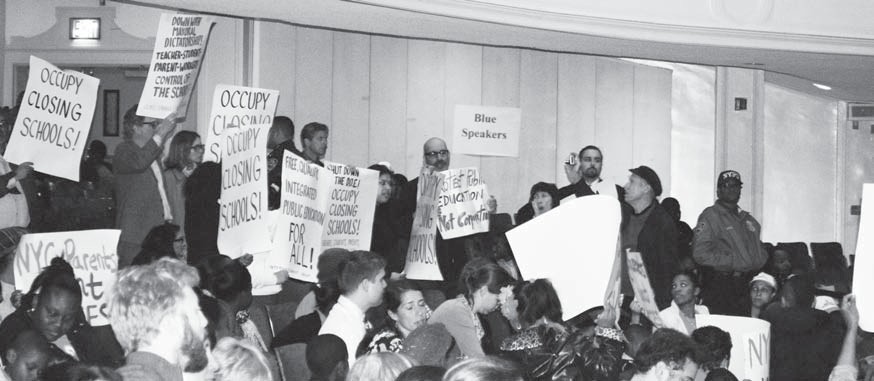
An additional 36,000 to 40,000 LIPA customers in the Rockaways were also bereft of power as of Monday, Nov. 5, according to Queens Borough President Helen Marshall’s office.
Cuomo warned utilities that they would be held accountable for their performance before, during and after Sandy. In an open letter distributed on Nov. 1, he said that “utilities, like elected officials, are vested with the public’s trust.”
“When they fail to keep the public’s trust,” Cuomo stated, “they must answer.”
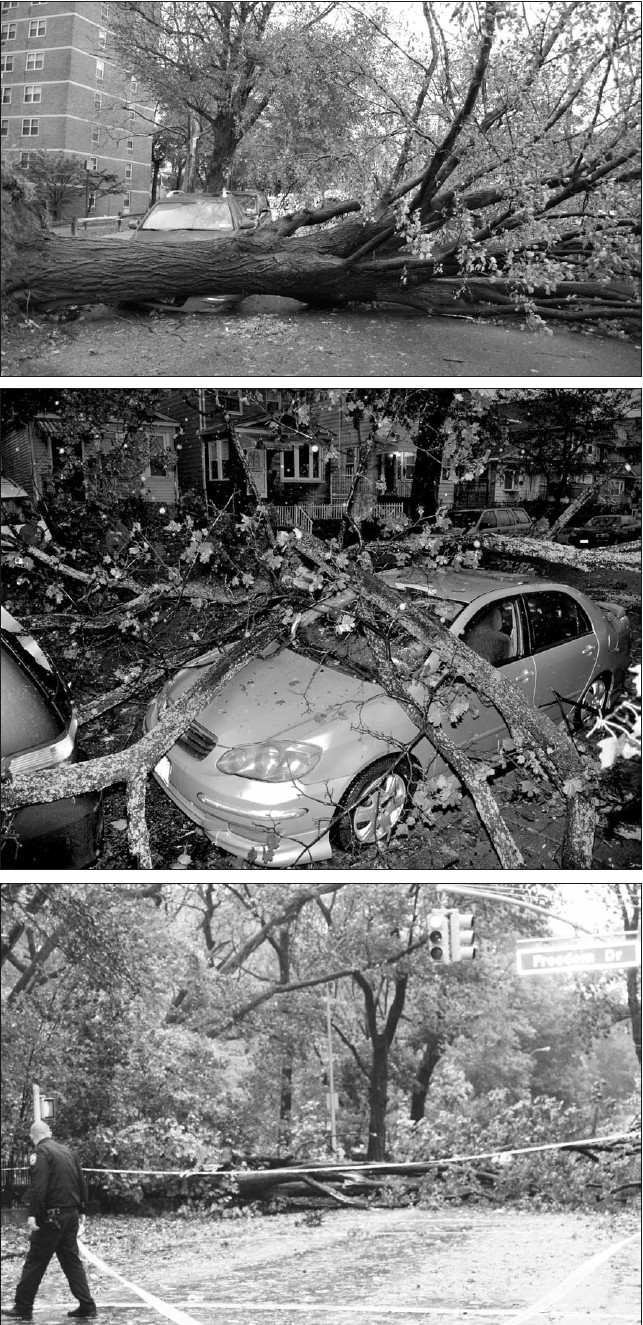
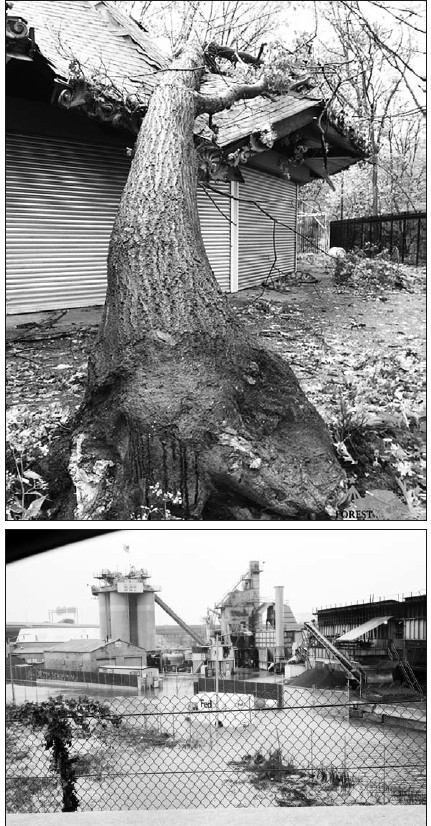
Bracing for another stormJust when everyone thought the situation could not get worse, anxiety grew again in the city when forecasts predicted that a new coastal storm— a traditional nor’easter expected to produce several inches of rain, winds of up to 50 mph and increased waves—was heading north. It was expected to arrive in the city between yesterday, Wednesday, Nov. 7, and today, Thursday, Nov. 8. Forecasters warned of the possibility for more flooding and beach erosion.
Mayor Michael Bloomberg on Tuesday, Nov. 6, announced that all city parks were closed as of noon yesterday through noon today due to the potential for fallen tree branches and limbs. Additionally, he suggested that residents in hard-hit, low-lying coastal areas of the city evacuate if they haven’t already done so, as the nor’easter was expected to produce a storm surge of between two and four feet.
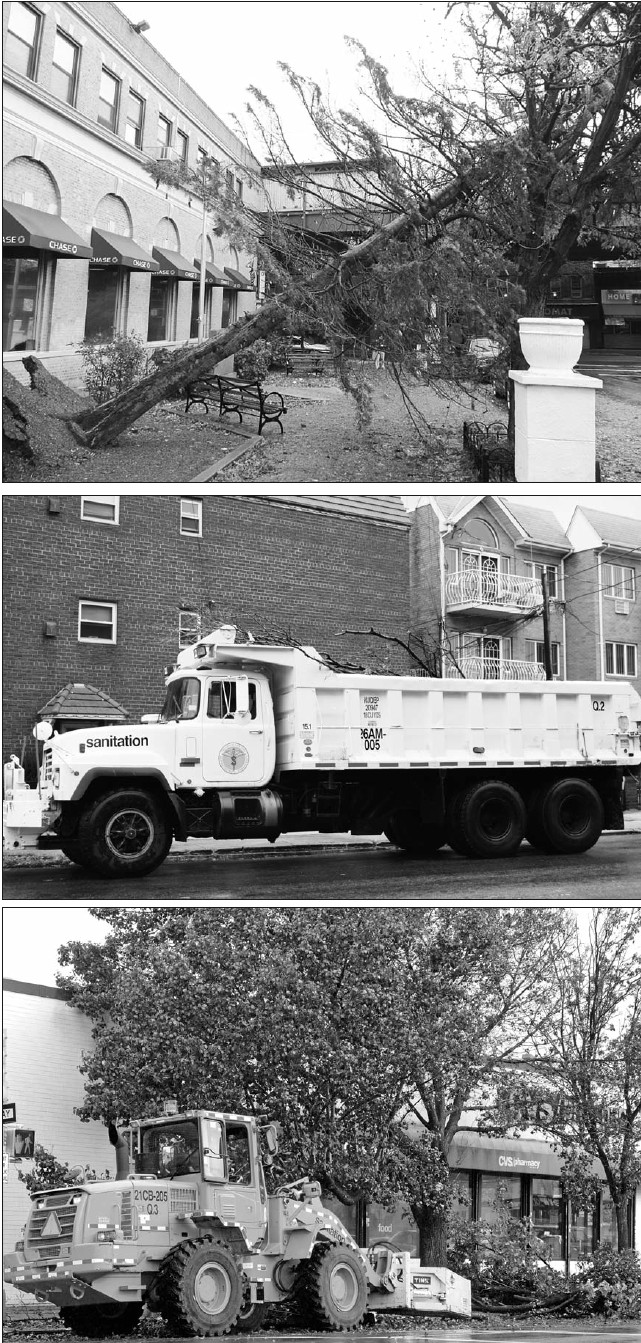
While the predicted storm surge was well below what Sandy had brought, Bloomberg noted, the coastlines of the Rockaways, Brooklyn and Staten Island sustained such damage from the hurricane that some of these areas could be vulnerable to flooding from this weaker nor’easter.
Like the city did before Sandy arrived, buses were made available to shuttle residents from some of the hardest-hit areas to one of the city’s 200 shelters. Patients were also evacuated from four long-term health care facilities located in Zone A, the lowlying coastal areas of the city ordered evacuated by Mayor Bloomberg prior to the storm’s arrival.
The Department of Environmental Protection (DEP) initiated its Flash Flood Emergency Plan Tuesday, which called for the cleaning of catch basins at 250 flood-prone locations across New York, and special “vactor trucks” were used to clean sewer lines. The Department of Buildings suspended outdoor work on city construction sites until 7 a.m. today and told crews to secure their equipment.
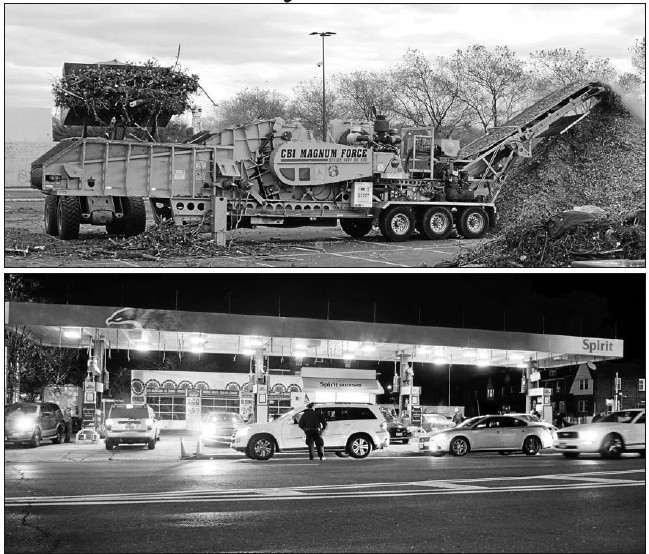
Running on empty
Gasoline was in great demand but short supply in the days following Sandy’s arrival. Refineries in New Jersey which usually supply gasoline and diesel to drivers in the city and Long Island were shut down during the storm, slowing down productions. Adding to the shortage were the closure of main arteries into and out of the city, as well as the temporary closure of New York Harbor.
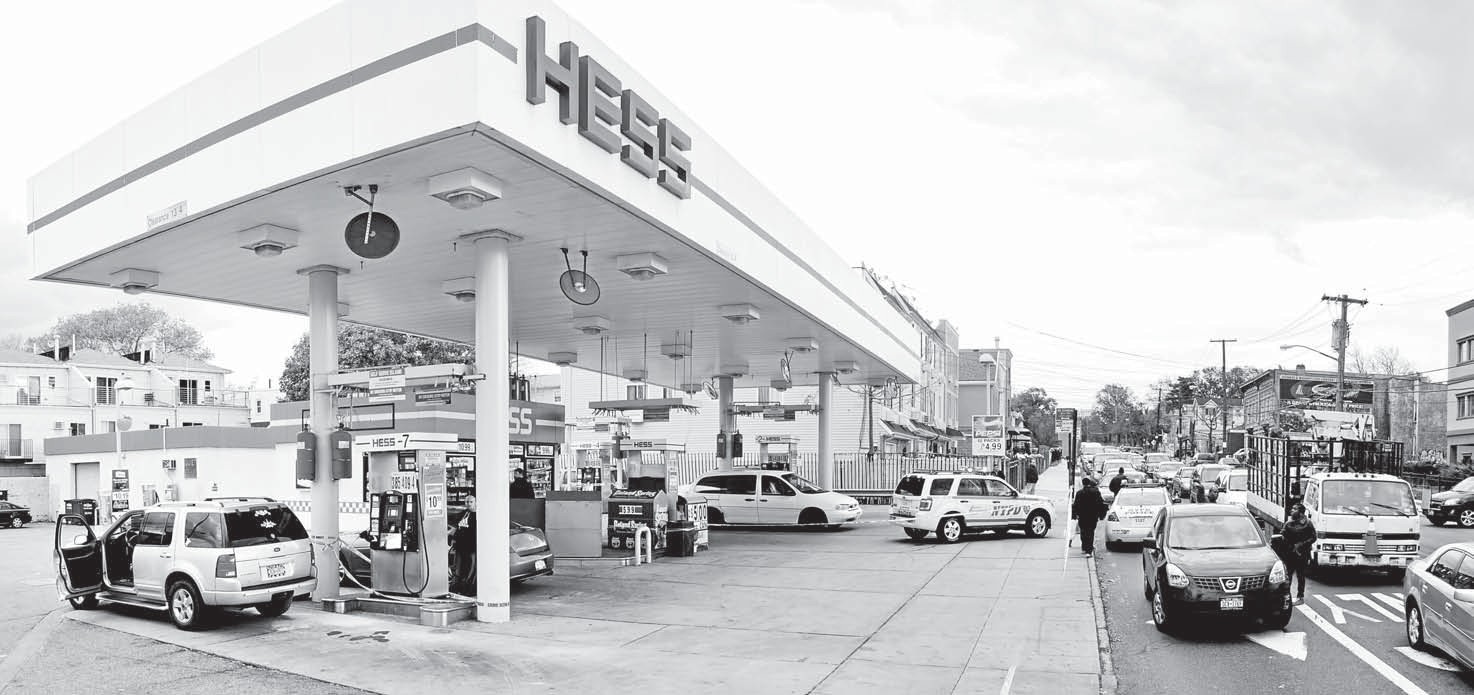
Even though millions of gallons of gasoline have been pouring into the city by tanker trucks, barges and pipelines since the weekend, in recent days drivers have been experiencing long lines to fill up resembling those seen at service stations during the gas crisis of the 1970s.
At times, the tempers flared between drivers at some of the gas lines around the area, leading to what police sources called “skirmishes” at some locations over alleged line-cutting. This led the NYPD—which has officers shifted around the city and tours extended in the aftermath of the storm—to devote more officers to gas stations to provide security and vehicular crowd control.
Some gas stations were forced to close after running out of fuel by last Thursday and Friday, and New Yorkers attempted to crowdsource information on which stations still had gas to sell. At the gas station on 39th Street and Queens Boulevard in Sunnyside, two lines formed on Friday night—one of vehicles seeking to refuel, and one of residents carrying handheld tanks for stranded cars or home generators.
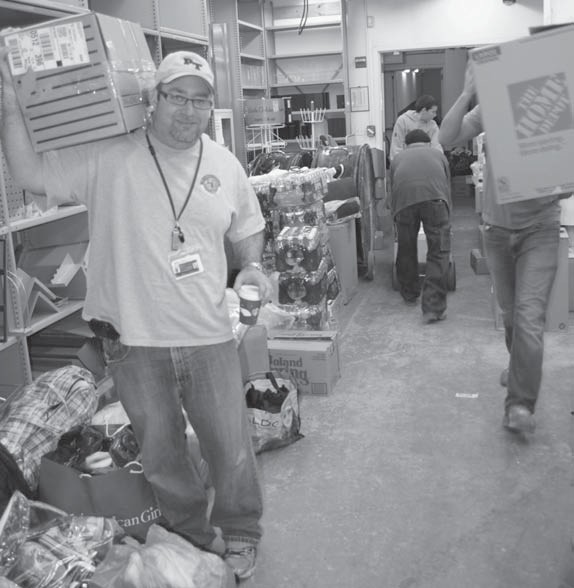
The Times Newsweekly found three stations in Glendale Friday which were shut down last Friday afternoon due to a lack of fuel: the Sunoco station at the corner of Myrtle Avenue and Cypress Hills Street, the Getty station at the corner of Cypress Hills Street and Cooper Avenue and the Gas Stop station, across the street from the Getty location.
Other area gas stations found to be tapped out last Friday afternoon were the Citgo station at Fresh Pond Road and Eliot Avenue on the Maspeth/Middle Village border and the Mobil station at the corner of Fresh Pond Road and 61st Street in Maspeth.
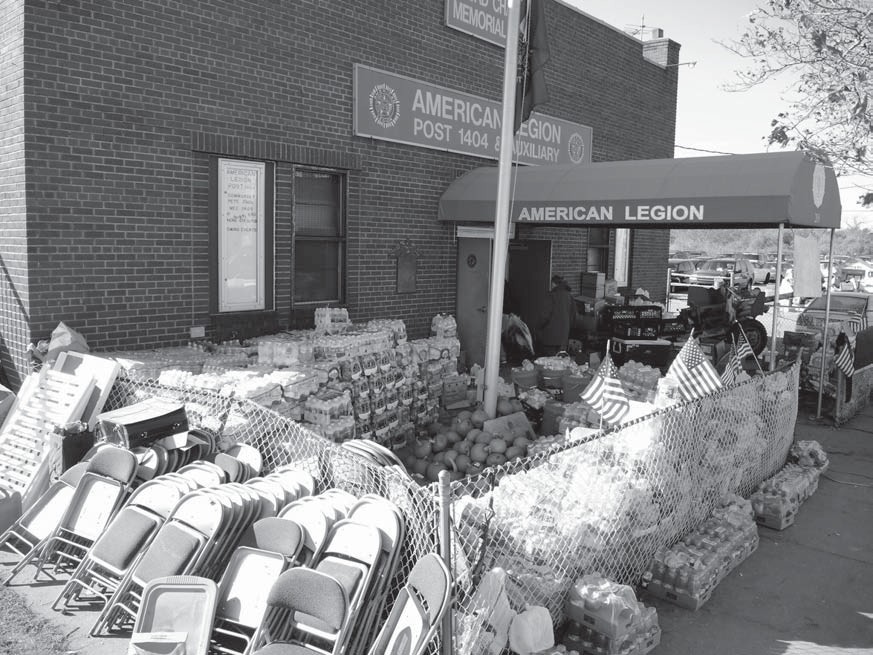
One location which seemed to have fuel was the Fresh Pond Bus Depot located below the Fresh Pond Road M train station in Ridgewood. The Times Newsweekly observed a line of passenger vehicles attempting to enter the depot on Friday afternoon.
An MTA spokesperson told this paper that the depot was providing fuel only to MTA employees in order for them to travel to and from work.
The Times Newsweekly managed to find what seemed to be the only public gas station in the area selling gasoline last Friday: the Hess station at the corner of Cypress and Cooper avenues in Glendale. Drivers queued up in their cars down Cypress Avenue and Vermont Place—a line stretching about a half mile—just to get into the station to buy a few gallons.
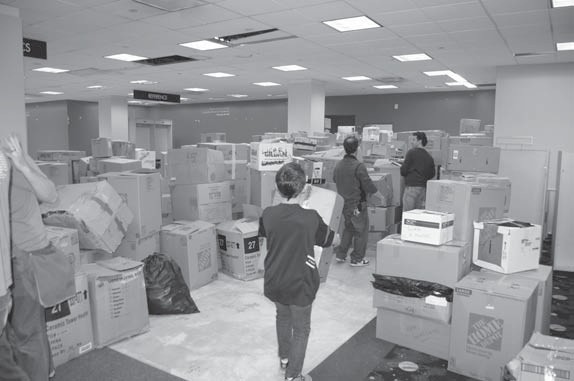
Over the weekend, Bloomberg, Cuomo and Sen. Charles Schumer all assured residents that relief at the pump was coming, with shipments coming into New York Harbor and being disseminated to gas stations in the metro area. The Department of Defense even dispatched tanker trucks to the New York City area to give out 10 gallons of free gasoline to drivers and individuals with gas cans—about a $40 value by today’s fuel prices—at select locations.
Yet throughout last Saturday and continuing into Sunday, there were still many long lines at gas stations, many frustrated drivers and not much fuel to be found.
Drivers in Ozone Park waiting to fill up at the Getty station located at Rockaway Boulevard and 95th Street lined up along the westbound lanes of the boulevard all the way down to 109th Avenue. The same seen was observed in Ridgewood on Sunday morning, as cars lined up along Flushing Avenue eastbound from the entrance to the Sunoco station at Woodward Avenue five blocks west to Cypress Avenue, and then around that block.
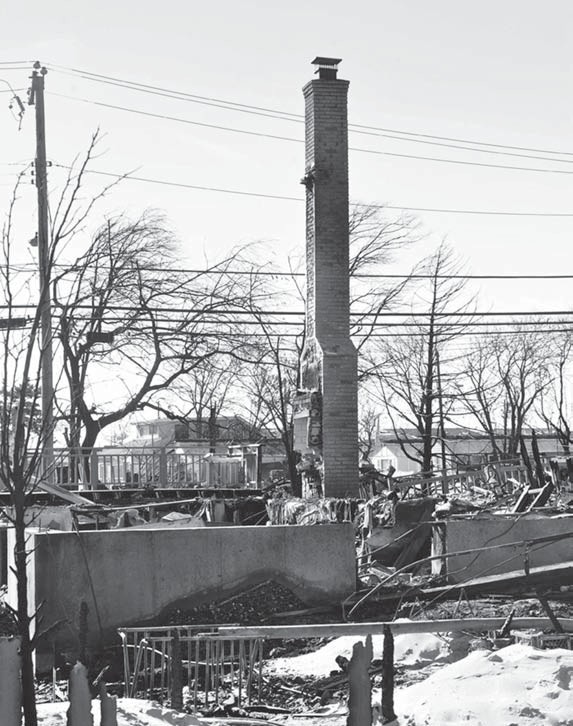
By Sunday night, however, the lines became visibly shorter in some areas, while other gas stations remained out of fuel.
Remembering the dead
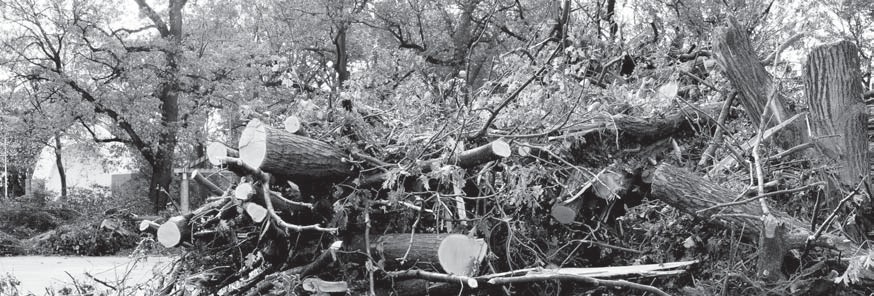
News of the city’s inconveniences and slow return to normalcy were tempered by the reports of the deaths of 40 people whose bodies were found by police in the days after Sandy struck. Many of these individuals were located in Zone A.
Most of the victims, including those found in their own homes, apparently succumbed to drowning caused by the storm surge. More than half of the storm-related deaths were on the Staten Island coastline, which was particularly hit hard by the waves.
Queens had its share of residents who did not survive Sandy. Police announced last Thursday night, Nov. 1, the death of 85-year-old Rose Faggiano of 98th Street, whose body was found inside her home on 98th Street between 164th and 165th avenues in Howard Beach at around 5:50 a.m. last Tuesday morning, Oct. 30.
Neighborhoods in the Rockaways also lost a number of victims in the storm, including the following:
• a 72-year-old man found dead in his bedroom at a home within the confines of the 100th Precinct at noon last Tuesday;
• an 84-year-old woman found dead inside her home, also at an undisclosed location within the 100th Precinct’s confines;
• Eden Toussaint, 58, who was found dead in the basement of his home on Beach 69th Street in Arverne at 5:15 p.m. last Wednesday, Oct 31;
• Rick Gold, 67, whose body was found last Tuesday and believed to have drowned inside the flooded basement of his home on Beach 133rd Street in Belle Harbor; and
• Henry Sullivan, 57, whose body was found last Tuesday and believed to have drowned inside his flooded basement on his Beach 136th Street residence in Belle Harbor.
Queens pulls together
Despite the devastation and the hardships, residents from across the city and beyond mobilized to help those in need.
From organizing efforts through social media website such as Facebook to old-fashioned flyers on lampposts— from official drives operated by local lawmakers and nonprofits to friends banding together—numerous relief events gathered needed supplies for residents of the Rockaways and Staten Island. With fuel at a premium, New Yorkers pooled their resources to send the relief to damaged areas.
At the New York Irish Center in Long Island City, volunteer Jane Mc- Carter told the Times Newsweekly on Sunday night that two truckloads full of supplies had been gathered at a relief drive at the center and at The Dugout, a Woodside pub, and sent to St. Francis de Sales Church in the Rockaways, a focal point for relief efforts. McCarter and other volunteers were still gathering more provisions for future shipments, stating that they will continue on a day-byday basis.
She marveled at the “outpouring of generosity and kindness” from Queens residents, as well as local moving companies that have offered to ship the supplies.
“We just want to do the best we can,” McCarter said.
In Bushwick, EcoStation:NY’s annual Calabazafest fall celebration at Maria Hernandez Park became an opportunity to gather funds and supplies.
In Astoria, bags of donations were piled up in front of the Broadway branch of the Queens Library thanks to efforts from Occupy Sandy, an offshoot of Occupy Wall Street dedicated to relief efforts.
The Woodhaven Residents’ Block Association collected supplies at its offices on Woodhaven Boulevard as well as hundreds of dollars in cash donations. The civic group is also planning what they call a “flashlight vigil” tomorrow, Friday, Nov. 9, which will serve not only as a memorial to the victims of Sandy, but also as drive to gather flashlights, batteries and other needed supplies for storm victims. (See additional information on Page 12.)
The former Borders bookstore at The Shops at Atlas Park in Glendale was a beehive of activity over the weekend as scores of volunteers took part in a donation drive organized by City Council Member Elizabeth Crowley. A similar relief drive took place on Sunday, Nov. 4, at Trinity Lutheran Church in Middle Village organized by Boy and Cub Scouts Troop/Pack 106.
At each of the relief drives, the response and generosity was overwhelming. Steady streams of residents came to the location during the morning and afternoon, dropping off bags of clothing, cases of bottled water, boxes of food and other essential items.
Volunteers—ranging from local scouts, little league baseball players, staffers for elected officials, Boy and Girl Scout troops and churchgoers to ordinary citizens who simply felt the need to do something about this crisis— hastily sorted and organized the items, packed them up into boxes or bags and then shipped them out to the hard-hit Rockaways and Broad Channel by car, van or even truck.
Considering that many of the storm victims lost everything they owned, no item brought to these relief drives was turned away. The amount of clothes donated at many of these events prompted organizers by Sunday evening to urge residents to instead donate other items such as toiletries, diapers and cleaning supplies.
With the rebuilding effort in storm-stricken areas expected to go on for many more weeks and months, the Times Newsweekly was informed by Eric Yun, a spokesperson for Crowley, that the collection site at the former Borders book store will again be open today, Thursday, Nov. 8, through Sunday, Nov. 11, from noon to 8 p.m.
Elected officials pitch in
State Sen. Joseph Addabbo, whose Howard Beach office was destroyed by flooding during the storm, set up shop with a folding table in front of the location and has been accepting all kinds of donated items. Powered by a portable light and a generator, the office has become a 24-hour operation during the crisis, as people from around the city and even the country have come by to offer whatever help they can.
As one example, a group from Chicago came by the office on Saturday with a barbecue pit and had a community cookout, handing out hamburgers and hot dogs to residents. A husband of one of The Real Housewives of New Jersey of cable television fame also dropped off a number of items on Sunday.
“It’s all greatly appreciated, and we’ve just got to get it out there” to people who need it, Addabbo told the Times Newsweekly on Monday. “My office in Howard Beach looks like a Target exploded. It has everything. … It does no good sitting on my curb. We’ve got to get it out there.”
Staff members have been available to not only provide the donated items to local residents, but also to distribute information on relief programs, the senator added.
Other local lawmakers got into the act as well. In addition to Crowley’s and Addabbo’s drives, drop-off sites were established at the district offices of Assemblywoman Margaret Markey (55-19 69th St. in Maspeth); City Council Member Karen Koslowitz (119-35 Queens Blvd. in Forest Hills), State Sen. Jose Peralta (32-37 Junction Blvd. in East Elmhurst) and City Council Member Jimmy Van Bramer (47-01 Queens Blvd., Suite 205 in Sunnyside) among others.
The Elmcor Senior Center (98-19 Astoria Blvd. in East Elmhurst); the Queens Center Mall (90-15 Queens Blvd. in Elmhurst, at its guest services kiosk), 82nd Street Academics (81-10 35th Ave. in Jackson Heights), 3J’s Pharmacy (90-12 Elmhurst Ave. in Jackson Heights), Make The Road New York’s Jackson Heights office (92-10 Roosevelt Ave. in Jackson Heights), the Lefrak City branch of the Queens Library (98-30 57th St. in Corona), the Dominico-American Society (40-27 97th St. in Corona), Raices Senior Center (107-24 Corona Ave. in Corona), the Resorts World New York casino (110-00 Rockaway Blvd. in South Ozone Park), and the Ridgewood YMCA (69-02 64th St., Ridgewood) also accepted donations.
On Monday, Nov. 5, Queens Borough President Helen Marshall announced that canned and non-perishable foods were being collected at Queens police stations and firehouses, as well as local Modell’s Sporting Goods locations, until Monday, Nov. 11. In addition, two cooking kitchens were set up in cooperation with Marshall and the Red Cross, at Resorts World New York and Jacob Riis Park.
Racing to help
Residents also volunteered their time in affected areas or shelters throughout the area, offering help in their areas of expertise, a hand moving equipment, or just someone to talk to.
Hilary Vidair, an Astoria resident who serves as the co-director of clinical training and as an assistant psychology professor at the C.W. Post campus of Long Island University, spoke to the Times Newsweekly on Monday, Nov. 5, about her experience volunteering at Queens College in Flushing.
Vidair was called to volunteer by signing up as a member of the NYC Medical Reserve Corps, and reported to the university’s gym to provide “psychological first aid” for some 800 people, including 200 from Gloria’s Manor, an assisted-needs facility in the Rockaways that was evacuated.
A Disaster Medical Assistance Team from the U.S. Department of Health and Human Services came to the shelter to help residents with medical needs, and representatives of Americorps, FEMA and the U.S. Public Health Services were also on hand.
Vidair and others worked the overnight shift, giving support or just someone to talk to. “It was such a powerful experience,” she said.
An “impressive” amount of donations poured in, Vidair reported, so much so that by Saturday night, a separate room was set aside for supplies and volunteers were asked to help catalogue and keep track of provisions.
“It was beautiful to see Queens citizens bring in supplies,” she stated. However, with the weather growing colder, blankets and coats are still needed.
While it has been a “civilized environment,” said Vidair, the mood of residents inside the shelter can vary drastically from despair to elation. As an example, she cited a resident who spent some time in foster care when she was younger. After she was featured on NY1, one of her former foster parents saw her on television and reached out to her; they were reunited after 25 years.
“Now she feels like she won the lottery,” said Vidair.
With the days growing colder, “my concern is long-term care, espe- cially at night,” Vidair noted, adding that she plans on continuing to volunteer whenever she can; in addition, the current gas shortage may prevent would-be volunteers from traveling to shelters.
However, if a volunteer can make it to a shelter, Vidair said that “the impact that you can make is so immediate, so clean and direct.”
Other residents also headed out to the Rockaways to offer help. Brandon Zwagerman of Ridgewood traveled to St. Francis de Sales on Sunday, and talked to the Times Newsweekly on Wednesday, Nov. 6 about his experience.
Invited by a friend to come volunteer, he and his girlfriend biked to the church where volunteers were directed to help local residents clean furniture out of basements that were flooded with sewage and storm water.
Along the bike route, Zwagerman found that the neighborhood looked “like a war zone” with gutted buildings and sand-filled streets.
“The boardwalk is completely gone,” he stated. “It just does not exist anymore.”
Thousands of volunteers are helping in a “giant semi-coordinated effort,” with most of the aid is provided by small groups banding together to help Rockways residents. One of the most visible local efforts is RockawayHelp, found at www.rockawayhelp.com. Occupy Sandy, the National Guard and the Red Cross are also helping, and Zwagerman cited the Department of Sanitation’s efforts in helping to clean up affected areas.
The church’s gym is full of donations; although clothes are no longer needed, cleaning supplies are in short supply.
Zwagerman said that he hopes to return this Saturday, where a big push is being coordinated to help dig out and move cars stuck in sand and strewn across local roads.
Despite the hardships, Zwagerman noted that residents and volunteers are attempting to stay positive in the face of the task before them.
“A lot of people seem to have a pretty good attitude,” he said.

